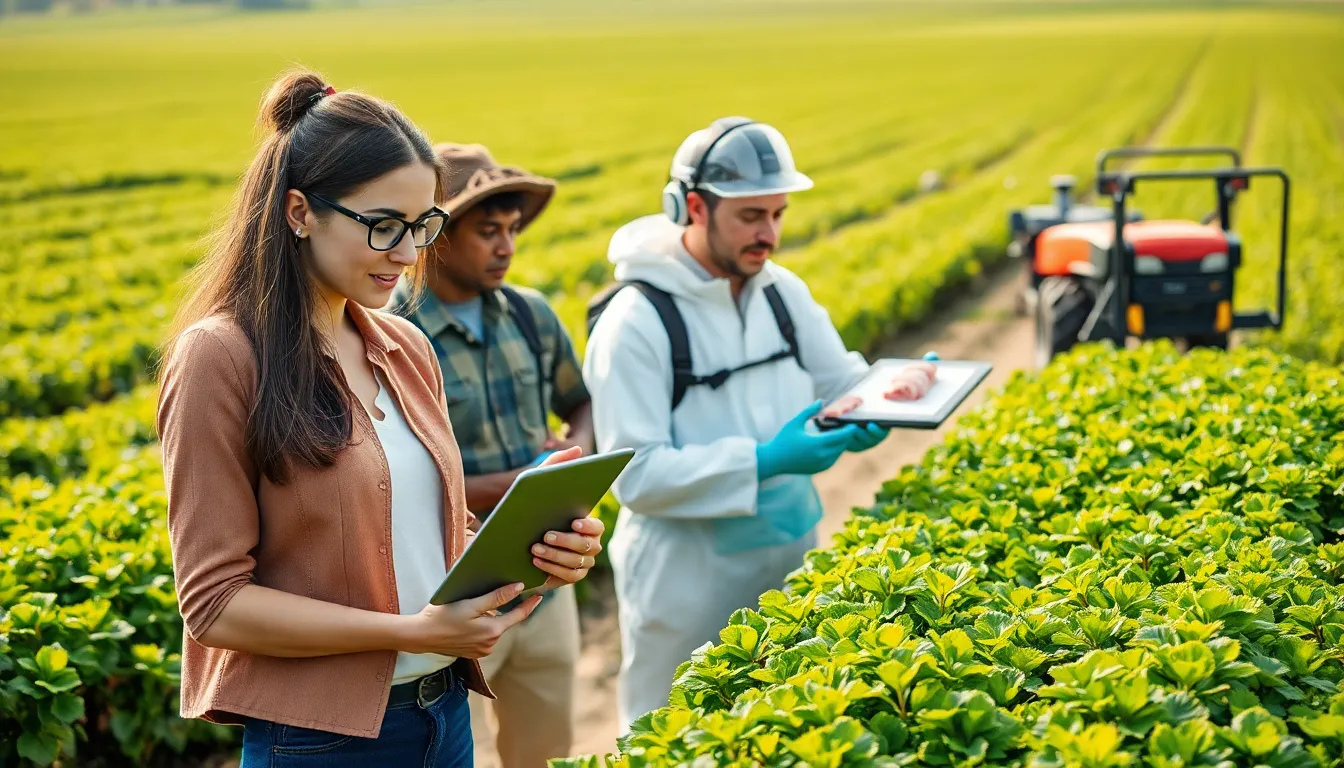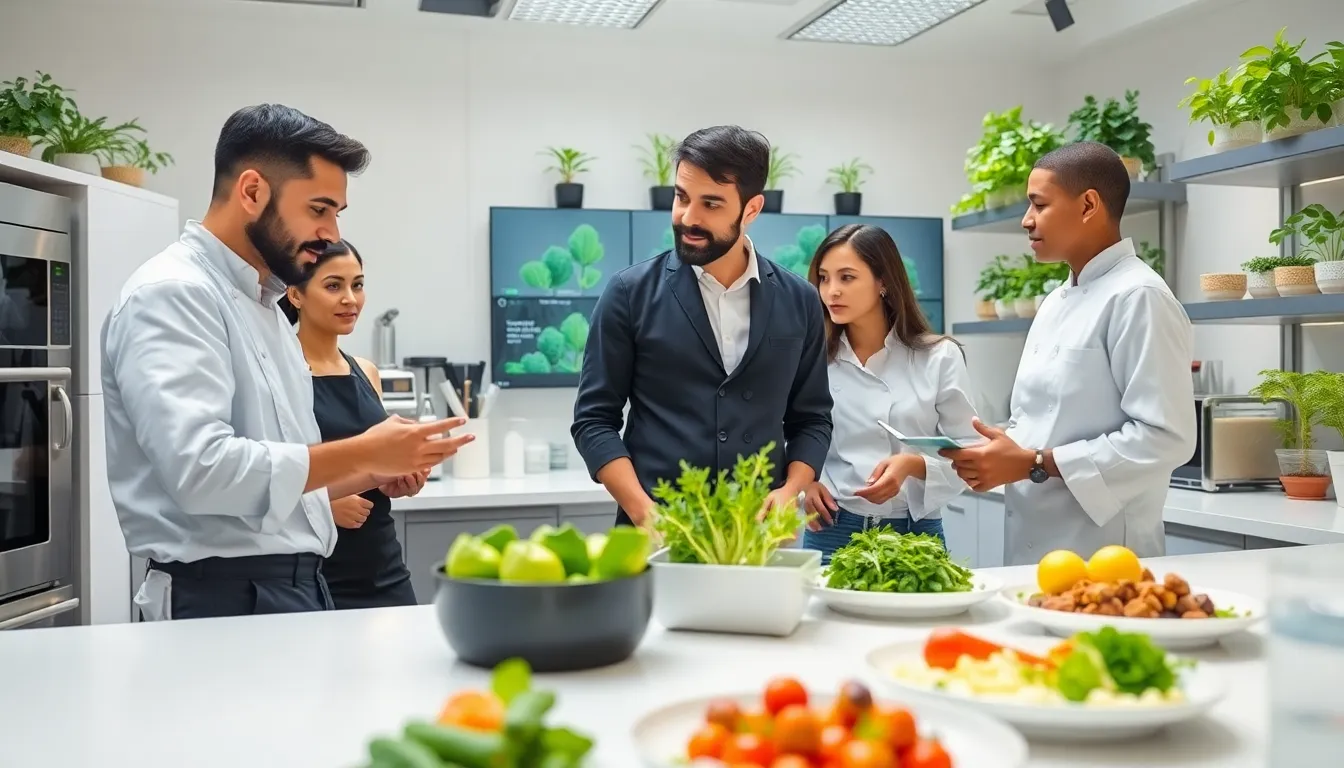Table of Contents
ToggleEver wondered if the future of food could be healthy for both you and the planet? Enter sustainable food technology, where culinary innovation meets environmental stewardship. Imagine biting into a delicious veggie burger made from lab-grown meat or sipping on a smoothie crafted from surplus fruits saved from the dumpster. Sound fancy? It’s not just a dream: it’s the reality we’re cooking up. In this text, we’ll dig into what sustainable food technology is, why it’s crucial, and the exciting innovations transforming how we eat. Let’s spoon jump into the food tech future.
What Is Sustainable Food Technology?

Sustainable food technology refers to innovative agricultural practices and food production methods designed to minimize environmental impact while ensuring food security. It focuses on methods that are environmentally friendly, economically viable, and socially responsible. This includes everything from precision agriculture, using data-driven techniques to optimize yield, to lab-grown meat that provides protein without the greenhouse gas emissions associated with traditional livestock farming. By adopting such practices, sustainable food technology aims to meet the food needs of the present without compromising the ability of future generations to meet theirs.
The goal is simple yet ambitious: to create a food system that is resilient, responsible, and capable of feeding a growing global population sustainably.
Importance of Sustainable Food Technology
The importance of sustainable food technology cannot be overstated. With the global population expected to reach nearly 10 billion by 2050, traditional food production methods are unsustainable. Overfishing, deforestation, and excessive water use contribute to climate change and biodiversity loss. Sustainable food technology seeks to tackle these challenges head-on.
This approach not only conserves resources but also enhances food security by reducing dependency on volatile markets and non-renewable resources. By investing in sustainable practices, communities can create local jobs, promote economic resilience, and ensure a stable food supply chain.
In essence, sustainable food technology isn’t just a trend: it’s a necessary evolution in how society approaches food production.
Innovative Technologies in Sustainable Food Production
Numerous innovative technologies are stepping into the spotlight in the realm of sustainable food production. For instance, vertical farming utilizes urban spaces to grow food in stacked layers, often using hydroponics or aeroponics. This method uses significantly less water and land than traditional farming.
Another key player is the development of plant-based substitutes and lab-grown meats. These products mimic the taste and texture of animal products without the associated environmental costs. Also, blockchain technology improves transparency in the food supply chain, allowing consumers to trace the origin of their food and ensuring ethical standards are met.
Besides, innovative food preservation techniques, such as high-pressure processing, enhance the shelf life of food without preservatives, reducing waste and making food safer for consumption. All these technologies are combining to create a more sustainable future, reshaping the landscape of food production.
Impact on Nutrition and Health
Sustainable food technology plays a pivotal role in nutrition and health. Enhanced production techniques can lead to the availability of healthier food options with fewer chemicals and preservatives. For instance, organic farming methods that are part of sustainable practices often result in produce that’s rich in nutrients and free from synthetic pesticides.
Also, the rise of plant-based diets and lab-grown meats can cater to individuals looking to reduce their meat consumption for health reasons, while still enjoying nutrient-rich options.
The overall outcome is not merely a shift in food production but also a transformation in dietary patterns, promoting healthier lifestyles and reducing the incidence of diet-related diseases such as obesity and diabetes.
Challenges and Limitations of Sustainable Food Technology
Even though its potential, sustainable food technology faces several challenges and limitations. One major hurdle is the financial investments needed for research and development. Many start-ups and even established companies struggle to access the capital required to innovate sustainably. Besides, regulatory frameworks often lag behind technological advancements, creating barriers to market entry.
Also, public perception can affect the adoption of new technologies. People may be hesitant to embrace genetically modified organisms (GMOs) or lab-grown food, even though their benefits. Resistance to change in consumption habits poses another challenge, as conventional food practices are deeply ingrained in cultures worldwide.
Addressing these issues requires collaboration between governments, industry leaders, and consumers to foster an environment that encourages innovation and acceptance.
Future Trends in Sustainable Food Technology
Looking ahead, the future of sustainable food technology appears promising, with several trends emerging on the horizon. The integration of artificial intelligence (AI) and machine learning in agriculture is set to revolutionize farming practices. These technologies can predict crop yields, monitor soil health, and optimize resource use, all contributing to greater efficiency.
Also, advancements in gene editing technologies, such as CRISPR, provide the opportunity to enhance food crops for sustainability traits, like drought resistance and pest tolerance.
Consumer demands for transparency and ethical sourcing will drive companies to adopt more sustainable practices, with blockchain technology playing a critical role in achieving these goals. As awareness about food waste continues to grow, innovative solutions to upcycle food scraps into new products will gain popularity.
All these factors indicate a shift towards more innovative, sustainable, and health-conscious food systems.





